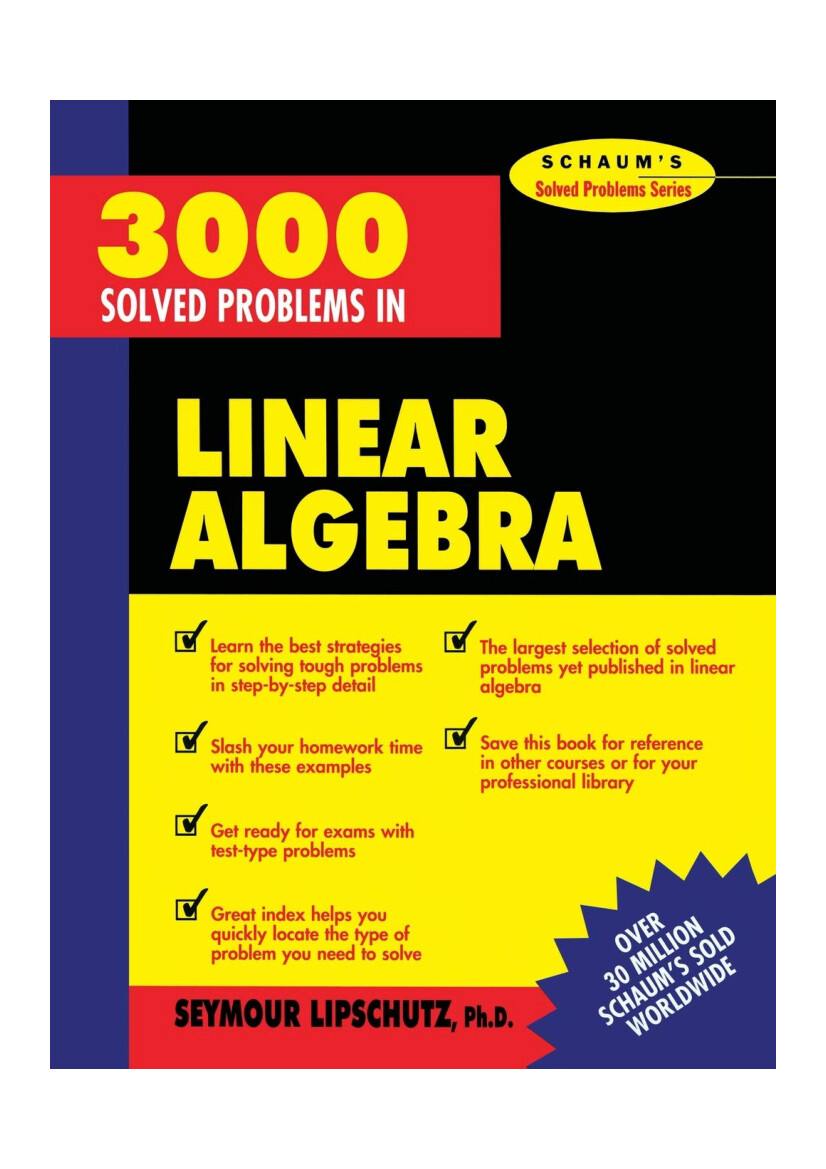
3,000 Solved Problems in Linear Algebra by Seymour Lipschutz || Full PDF
Master linear algebra with Schaum’s–the high-performance solved-problem guide. It will help you cut study time, hone problem-solving skills, and achieve your personal best on exams! Students love Schaum’s Solved Problem Guides because they produce results. Each year, thousands of students improve their test scores and final grades with these indispensable guides. Get the edge on your classmates. Use Schaum’s! If you don’t have a lot of time but want to excel in class, use this book to:Brush up before testsStudy quickly and more effectivelyLearn the best strategies for solving tough problems in step-by-step detailReview what you’ve learned in class by solving thousands of relevant problems that test your skillCompatible with any classroom text, Schaum’s Solved Problem Guides let you practice at your own pace and remind you of all the important problem-solving techniques you need to remember–fast! And Schaum’s are so complete, they’re perfect for preparing for graduate or professional exams.Inside you will find:3000 solved problems with complete solutions–the largest selection of solved problems yet published on this subjectAn index to help you quickly locate the types of problems you want to solveProblems like those you’ll find on your examsTechniques for choosing the correct approach to problemsGuidance toward the quickest, most efficient solutionsIf you want top grades and thorough understanding of linear algebra, this powerful study tool is the best tutor you can have!
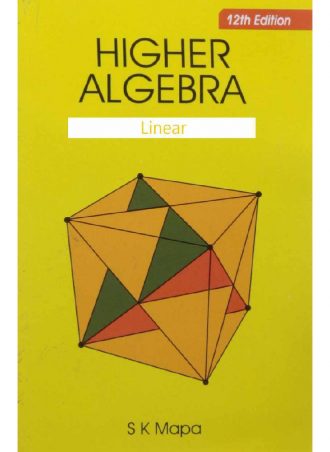
B.Sc. – Higher Algebra- Abstract and Linear, 12th Edition by S. K. Mapa || Full PDF Download
The book tries to be a textbook for two different, yet related fields of Mathematics: Modern Algebra and Linear Algebra, and it does a very good job at that. There are glaring similarities between the two subjects, so it is quite sensible to treat both of those in a single text.
Note: Thank you for visiting our website. If you encounter payment difficulties, use UPI (bettersolutionforyou@icici) and email (bettersolutionforyou@gmail.com) us a payment screenshot. The purchased file will be emailed to you.

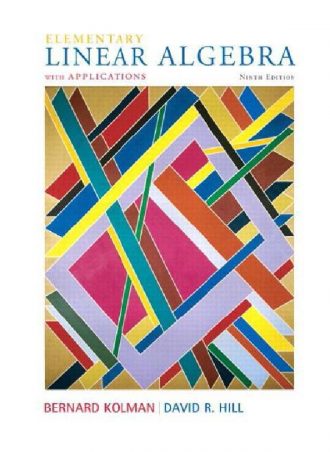
Elementary Linear Algebra with Applications (9th Edition, 2008) -Pearson Education, Inc. by Bernard Kolman, David R. Hill
This book presents the basic ideas of linear algebra in a manner that users will find understandable. It offers a fine balance between abstraction/theory and computational skills, and gives readers an excellent opportunity to learn how to handle abstract concepts. Included in this comprehensive and easy-to-follow manual are these topics: linear equations and matrices; solving linear systems; real vector spaces; inner product spaces; linear transformations and matrices; determinants; eigenvalues and eigenvectors; differential equations; and MATLAB for linear algebra. Because this book gives real applications for linear algebraic basic ideas and computational techniques, it is useful as a reference work for mathematicians and those in field of computer science.
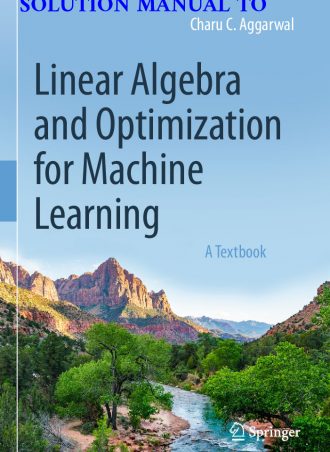
Instructor’s Solution Manual for Linear Algebra and Optimization for Machine Learning: A Textbook, 2020 by Charu C. Aggarwal
This textbook introduces linear algebra and optimization in the context of machine learning. Examples and exercises are provided throughout the book. A solution manual for the exercises at the end of each chapter is available to teaching instructors. This textbook targets graduate level students and professors in computer science, mathematics and data science. Advanced undergraduate students can also use this textbook. The chapters for this textbook are organized as follows:
1. Linear algebra and its applications: The chapters focus on the basics of linear algebra together with their common applications to singular value decomposition, matrix factorization, similarity matrices (kernel methods), and graph analysis. Numerous machine learning applications have been used as examples, such as spectral clustering, kernel-based classification, and outlier detection. The tight integration of linear algebra methods with examples from machine learning differentiates this book from generic volumes on linear algebra. The focus is clearly on the most relevant aspects of linear algebra for machine learning and to teach readers how to apply these concepts.
2. Optimization and its applications: Much of machine learning is posed as an optimization problem in which we try to maximize the accuracy of regression and classification models. The “parent problem” of optimization-centric machine learning is least-squares regression. Interestingly, this problem arises in both linear algebra and optimization, and is one of the key connecting problems of the two fields. Least-squares regression is also the starting point for support vector machines, logistic regression, and recommender systems. Furthermore, the methods for dimensionality reduction and matrix factorization also require the development of optimization methods. A general view of optimization in computational graphs is discussed together with its applications to back propagation in neural networks.
A frequent challenge faced by beginners in machine learning is the extensive background required in linear algebra and optimization. One problem is that the existing linear algebra and optimization courses are not specific to machine learning; therefore, one would typically have to complete more course material than is necessary to pick up machine learning. Furthermore, certain types of ideas and tricks from optimization and linear algebra recur more frequently in machine learning than other application-centric settings. Therefore, there is significant value in developing a view of linear algebra and optimization that is better suited to the specific perspective of machine learning.

Introduction to Linear Algebra 4th Edition 2009
Linear algebra is something all mathematics undergraduates and many other students, in subjects ranging from engineering to economics, have to learn. The fifth edition of this hugely successful textbook retains all the qualities of earlier editions while at the same time seeing numerous minor improvements and major additions.
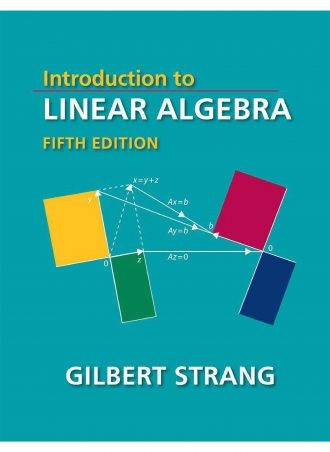
Introduction to Linear Algebra 5th Edition
Linear algebra is something all mathematics undergraduates and many other students, in subjects ranging from engineering to economics, have to learn. The fifth edition of this hugely successful textbook retains all the qualities of earlier editions while at the same time seeing numerous minor improvements and major additions.
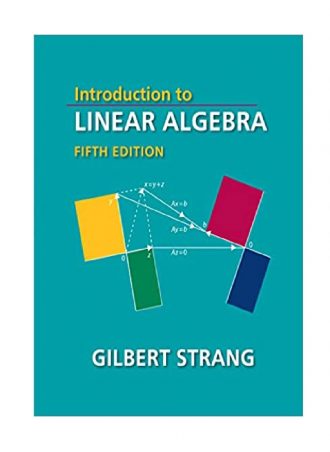
Introduction to Linear Algebra 5th edt. Wellesley-Cambridge Press (2016) by Gilbert Strang
Linear algebra is something all mathematics undergraduates and many other students, in subjects ranging from engineering to economics, have to learn. The fifth edition of this hugely successful textbook retains all the qualities of earlier editions, while at the same time seeing numerous minor improvements and major additions. The latter include: • A new chapter on singular values and singular vectors, including ways to analyze a matrix of data • A revised chapter on computing in linear algebra, with professional-level algorithms and code that can be downloaded for a variety of languages • A new section on linear algebra and cryptography • A new chapter on linear algebra in probability and statistics. A dedicated and active website also offers solutions to exercises as well as new exercises from many different sources (including practice problems, exams, and development of textbook examples), plus codes in MATLAB®, Julia, and Python.

Introduction to Linear Algebra with Applications-McGraw-Hill (2009) by James DeFranza, Daniel Gagliardi
Linear Algebra with Applications is an introductory text targeted to second or advanced first year undergraduates in engineering or mathematics. The organization of this text is motivated by the authors’ experience which tells them what essential concepts should be mastered by students in a one semester undergraduate Linear Algebra course. The authors’ main objectives are to fully develop each topic before moving on and to connect topics naturally. The authors take great care to meet both these objectives, because this organization will allow instructors teaching from this text to stay on task so that each topic can be covered with the depth required before progressing to the next logical one. As a result the reader is prepared for each new unit and there is no need to repeat a concept in a subsequent chapter when it is utilized.
This text is geared towards an introductory linear algebra course taken by first or second year undergraduate students. However, it offers the opportunity to introduce the importance of abstraction, not only in mathematics, but in many other areas where Linear Algebra is used. The textbook’s approach is to take advantage of this opportunity by presenting abstract vector spaces as early as possible. Throughout the text, the authors are mindful of the difficulties that students at this level have with abstraction and introduce new concepts first through examples which gently illustrate the idea. To motivate the definition of an abstract vector space, and the subtle concept of linear independence, the authors use addition and scalar multiplication of vectors in Euclidean Space. The authors have strived to create a balance between computation, problem solving, and abstraction. This approach equips students with the necessary skills and problem solving strategies in an abstract setting that allows for a greater understanding and appreciation for the numerous applications of the subject.